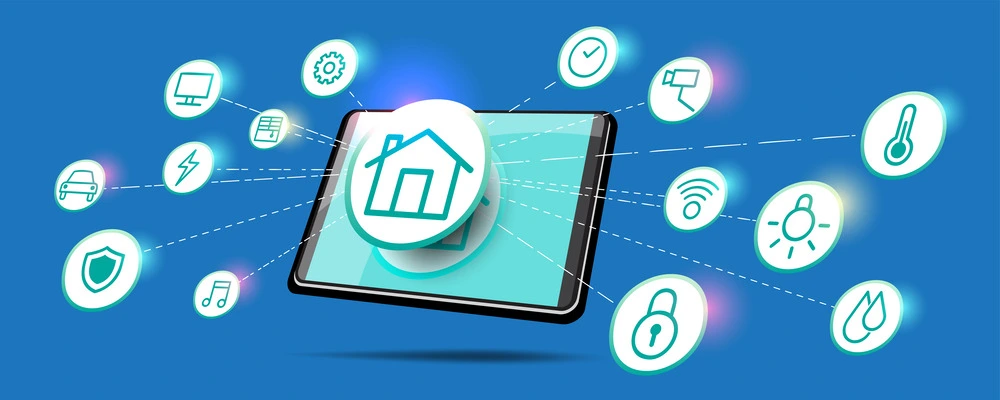It is the time of the year when we revisit our carefully written 2025 New Year resolutions list and frown at how we could not stick to it religiously. Letting the everyday demands of life and work get in its way. It isn’t amusing to realize we are not committed to our boldly written, heartfelt intentions. However, if you are a networking professional, we have the good news.
You can ace your job as well as carve out the ‘me’ time to pursue your 2025 resolutions. To help you remain proactive and stay ahead of the curve, we have curated the top network automation trends in 2025. Sound Exciting? Here is the list that you need a copy on your work desk.
Related blog: How MSPs are Using AI and Automation to Enhance IT Management
Counter Cyber Threats with Artificial Intelligence
Ransomware, malicious virus attacks, and data thefts continue to plague modern connected organizations. The attacks get unexpected, unprecedented, and sophisticated over time. Integrating artificial intelligence (AI) and machine learning (ML) into security solutions would analyze threat intelligence data, find patterns, detect anomalies in advance, and protect your IT infrastructure. Proactive investments in AI-powered cybersecurity solutions will help you build an impenetrable digital fortress.
Network Source of Truth (NSoT) is Central to Success
Shoestring budget is synonymous with IT networking teams, yet they are expected to support ever-expanding, multi-cloud, numerous API, multi-configured devices, and digital transformation projects. Network data is often siloed, scattered, and redundant in a distributed infrastructure.
Automating your network operation is not only essential, but it will also provide you with a Network Source of Truth (NSoT). There are many benefits to achieving NSoT, which include accurate information exchange between networks, increased lifetime of networking devices, faster solution deployments, and minimal operational costs.
Industrial Internet of Things (IIoT) Gets Stronger

Industry 4.0 is standing tall and bright. Traditional industries are adopting the Industrial Internet of Things (IIoT) to improve process efficiency and profit margins. Discrete manufacturing, Oil & Gas, and Automotive have already surpassed the proof-of-concept stage of IIoT and are now extending it to mainstream business, creating smart factories.
This means integrating multiple intelligent devices, big data, legacy systems, and complex IT stacks. IIoT opens up a higher volume of data exchange across different networks. The networking automation specialists must equip themselves with knowledge and tools to navigate this industrial high tide.
SASE Prevails in the Remote-work Era
The COVID-19 pandemic spurred the growth of SASE (Secure Access Service Edge) as an alternative to SD-WAN to increase network visibility and tighten security in remote work setups. The remote work concept could have been transformed into a hybrid working model. However, the prevalence of SASE is still attractive to IT and networking professionals.
SASE typically includes firewalls, cloud web security, and Zero Trust Network Access (ZTNA) and assures a high level of security for both companies operating in 100% remote and hybrid models. Lower security breaches, zero data theft, and complete visibility into geographically scattered teams are some of the benefits SASE offers.
Legacy Network Configuration Management (NCM) is Dead
Network Configuration Management (NCM) tools have been helping networking teams for many years. Even decades. However, these tools are designed with less automation capabilities and require more manual intervention. They are not equipped to keep up with the current speed of digital transformation initiatives. There are limitations to scalability. The network teams are migrating to tools that facilitate ‘out-of-the-box’ configuration management using a low-code/no-code approach.
5G Network: Beginning of a Novel Communication
The mobile communication is constantly evolving, and the 5G network is the latest development. While this communication marvel opens up new communication methods, it also brings fresh challenges with complex instruments, newer applications, and explosive data exchanges at lightning speed.
Large industries and established conglomerates favoring IIoT and smart factories that need ultrafast connectivity, scalability, and very low latency are building private 5G networks. The logistics and transportation sectors are already experimenting with 5G and seeing good results. In the coming days, the 5G network will be a game changer in the digital transformation programs.
Intent-Based Networking: The Magic Wand
The ultimate magic wand a network engineer would wish for is intent-based networking. In a conventional method, the networking team would carry out manual operations like command-line interface (CLI)-based operations, basic element management systems (EMSs), or automation scripts to configure devices. These manual operations aim to achieve a specific business outcome, like improving network quality by 5%.
However, in the case of an intent-based network, you need to define the intent or business outcome, and the system will automatically translate it into real-time actions and make necessary device configurations within the network. An intent-based network minimizes manual errors, eliminates risks, and improves operational efficiency.
Vendor-Agnostic Network Automation Platforms
It is predicted that software applications will continue to be installed in a distributed fashion at the edge of the network, closer to the user, promising real-time, high-bandwidth, and low-latency access to applications. This also translates into a complex amalgamation of digital infrastructure comprising data centers, cloud environments, edge devices, and multiple micro-networks.
Each network device manufacturer has tools and processes to maintain and manage their devices. Networking teams often struggle with this case, juggling numerous tools for periodic patch updates and other upgrades. It is a tiring and cumbersome activity, dumped on network engineers. Now, more and more networking teams are opting for vendor-agnostic automation platforms. These multi-vendor tools will free up their time and improve productivity.
It is abundantly clear that 2025 network automation trends favor networking teams with superior automation, easier tools, and exciting business opportunities. The challenges are easy to navigate with the proper knowledge, experience, and expertise.
Related blog: Enhancing Telecom Customer Experience: Leveraging NMS for Superior Quality of Service
Networking teams – 2025 is for you!



















